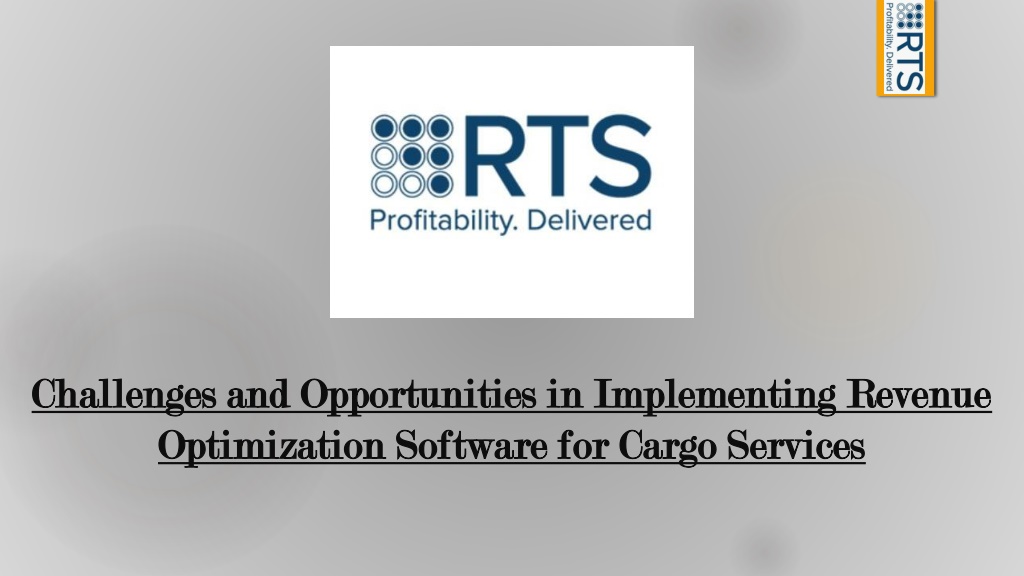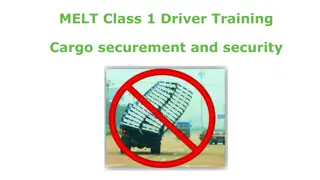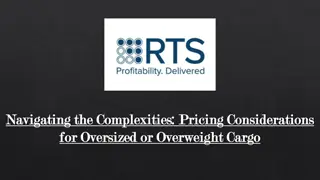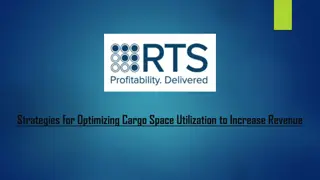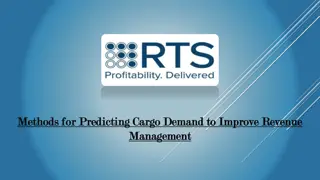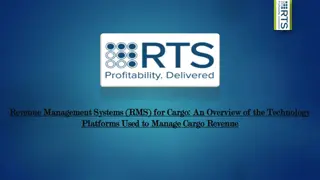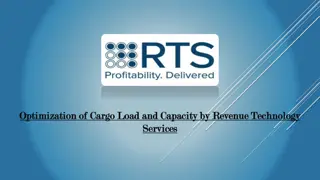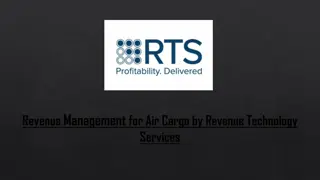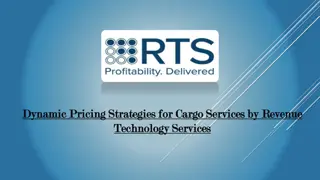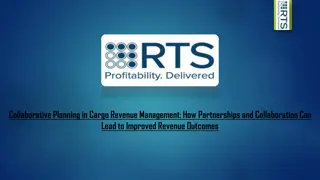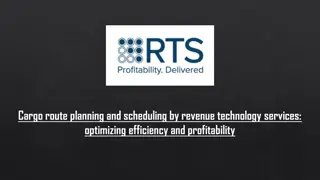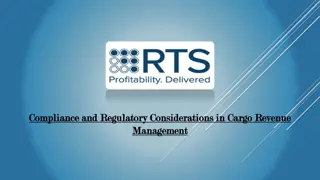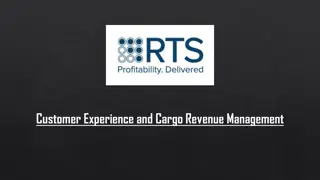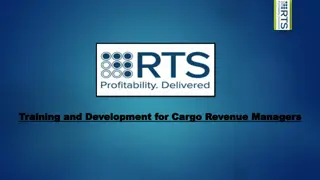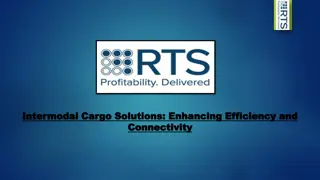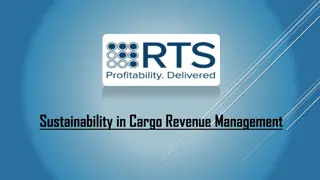Challenges and Opportunities in Implementing Revenue Optimization Software for Cargo Services
In the rapidly evolving world of cargo services, the implementation of revenue optimization software presents a unique set of challenges and opportunities. Particularly, integrating systems that leverage advanced cargo pricing and dynamic pricing strategies can transform operations, enhance competitiveness, and substantially increase profitability. However, the journey towards fully leveraging these technologies involves navigating through complex terrains of both technical and strategic challenges.n
- cargo cloud solutions
- cargo pricing
- cargo revenue
- cargo revenue management
- cargo solutions
- cargo strategy consulting
Download Presentation

Please find below an Image/Link to download the presentation.
The content on the website is provided AS IS for your information and personal use only. It may not be sold, licensed, or shared on other websites without obtaining consent from the author. Download presentation by click this link. If you encounter any issues during the download, it is possible that the publisher has removed the file from their server.
E N D
Presentation Transcript
Challenges and Opportunities in Implementing Revenue Challenges and Opportunities in Implementing Revenue Optimization Software for Cargo Services Optimization Software for Cargo Services
In the rapidly evolving world of cargo services, the implementation of revenue optimization software presents a unique set of challenges and opportunities. Particularly, integrating systems that leverage advanced cargo pricing and dynamic pricing strategies can transform operations, enhance competitiveness, and substantially increase profitability. However, the journey towards fully leveraging these technologies involves navigating through complex terrains of both technical and strategic challenges.
Understanding the Challenges Understanding the Challenges Systems: One of the primary challenges in implementing revenue optimization software in cargo services is ensuring seamless integration with existing systems. Many cargo companies operate on legacy systems that are not initially designed to support the high-speed, real-time computations required for effective dynamic pricing. Upgrading these systems can be costly and time-consuming. 2. Data Quality and Data Quality and Availability Availability: Effective cargo pricing strategies are heavily dependent on the quality and granularity of data available. Historical data on cargo loads, seasonal demand fluctuations, and pricing models are imperative. However, in many instances, this data is either not systematically collected or is spread across different databases, making consolidation and effective usage difficult. 3. Change . Change Management: Management: Adopting new software requires significant changes in organizational processes and mindset. Employees need to be trained not only on how to use the new software but also on understanding the nuances of dynamic pricing strategies. Resistance to change is a common barrier that can hinder the adoption of new technologies. 4. Regulatory . Regulatory Compliance Compliance: With cargo services often crossing international boundaries, compliance with local and international regulations can be complex. Revenue optimization software must adhere to these regulations, which can vary widely from one region to another, adding another layer of complexity to the implementation process. 1. Integration with Existing . Integration with Existing Systems
Seizing the Opportunities Seizing the Opportunities Despite these challenges, the implementation of revenue optimization software offers substantial opportunities for cargo services. 1. Enhanced Revenue Enhanced Revenue Management adjust prices based on real-time market conditions and demand. This capability allows cargo companies to maximize their revenue during peak times and optimize their capacity utilization during off-peak times, leading to overall increased profitability. 2. Improved Customer Improved Customer Insights Insights: Advanced analytics provided by revenue optimization tools can offer deep insights into customer behavior and preferences, enabling cargo services to tailor their offerings more effectively. This can lead to improved customer satisfaction and loyalty, as services can be better aligned with customer needs. 3. Competitive Competitive Advantage Advantage: Companies that successfully implement revenue optimization software can significantly outperform competitors who do not use such advanced pricing strategies. The ability to quickly adjust to market conditions and optimize pricing offers a substantial competitive edge in a market driven by thin margins and high competition. 4. Operational . Operational Efficiency Efficiency: Revenue optimization software can automate many of the routine tasks associated with pricing and revenue management. This automation reduces the likelihood of human error and frees up resources to focus on strategic decision-making and business growth. Management: At the heart of revenue optimization software is the ability to dynamically
Moving Forward Moving Forward For cargo companies, the road to implementing revenue optimization software is not without its hurdles. It requires a well-thought-out strategy that considers technological integration, data management, regulatory compliance, and organizational change management. However, the benefits ranging from enhanced profitability through better cargo pricing mechanisms to gaining a competitive edge with dynamic pricing make tackling these challenges worthwhile. As the cargo industry continues to grow and evolve, the companies that can effectively harness the power of revenue optimization software will be well-positioned to lead the market. This journey, while complex, is a necessary evolution in the digital age of logistics and transportation.
THANK YOU THANK YOU
